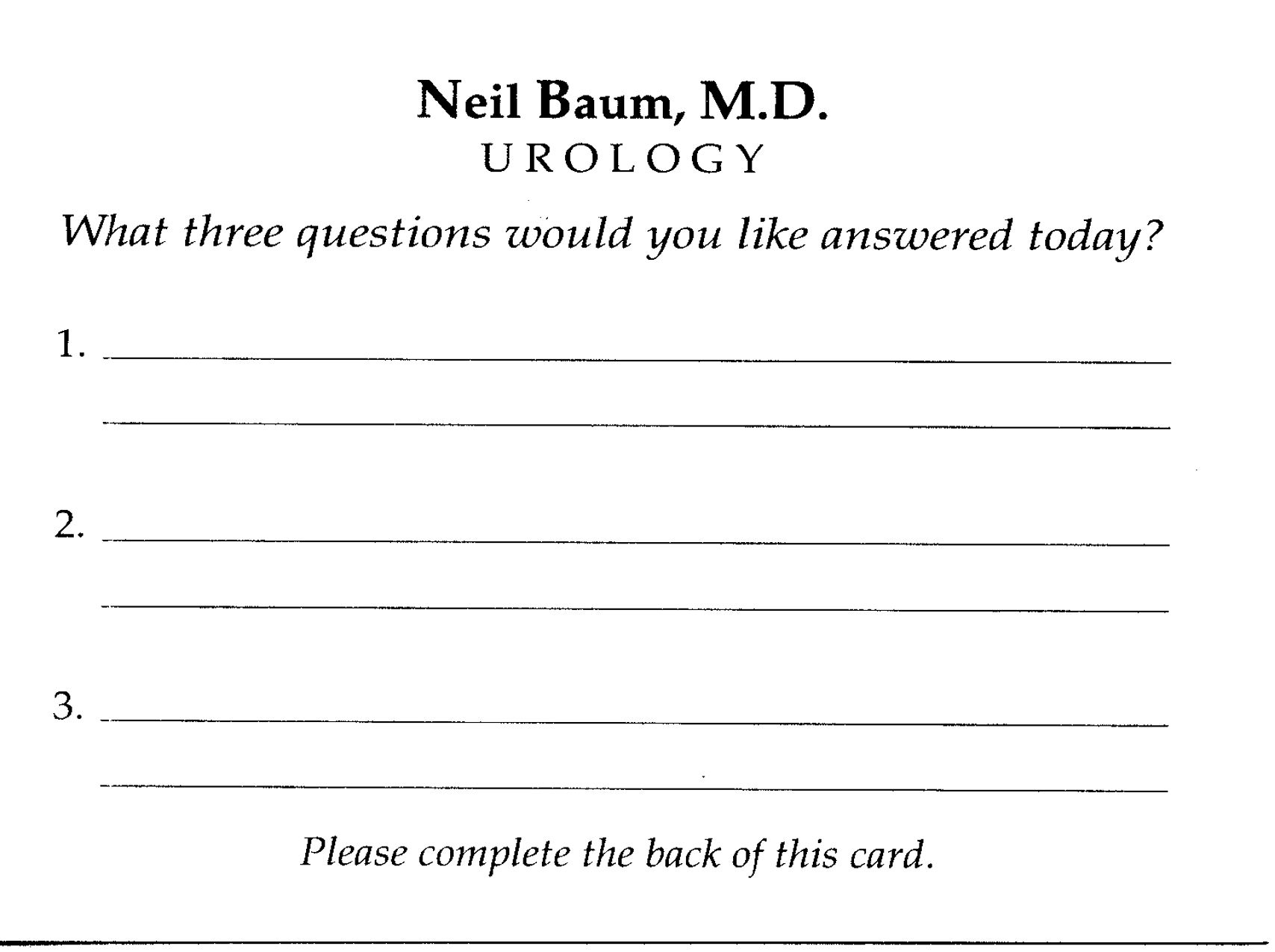The practice marketing minute
Marketing can be more than fancy campaigns and social media strategies.
© xyz+ - stock.adobe.com

“People will forget what you did; they will forget what you said. But they will never forget how you make them feel.” Maya Angelou
Physicians often think of marketing as flashy brochures, radio and T.V. commercials, and a presence on social media. The easiest way to market your practice is to provide stellar service to the patients already in the practice. This blog offers eight suggestions that take one minute to enhance the relationship with your existing patients so they may have a positive experience with you and your practice.
1. Check that you have the correct chart.
Nothing is more embarrassing to a physician than talking to a patient about their medical condition only to find they are speaking to the wrong patient. Be careful if you have two patients with the same last name and note this on both patients' EMR demographic pages. For two patients with the same last name, use the middle initial to distinguish between two similar patients.
2. Pronounce the patient's name correctly.
Everyone likes the sound of their own name. The most important word in the human language to each of us is our own name. You don't win points with your patients when you mispronounce their names. One of the best ways to pronounce it correctly is to have the receptionist spell the patient's last name phonetically and write it on the chart label.
Your receptionist might write “cow-wall-ski” for a patient with the last name Kowalski. When you walk into the room and say the name correctly, you will have impressed your patient since most people mispronounce their names.
3. Review the medical record before entering the room.
Before you enter the exam room, you should have the minimum necessary information about the patient's clinical condition. While at the door, review the diagnosis, the previously recommended treatment, such as surgery or medications, the results of tests or studies you ordered on the last visit, and your treatment plan.
Patients are not impressed when you walk into the room and immediately go to the computer looking for this information rather than focusing on the patient. Suppose you have reviewed this minimal amount of material from the EMR. In that case, you will appear knowledgeable, informed, and genuinely interested in the patient. Now, you can focus with eye contact on the patient instead of the computer.
4. Make use of social progress notes.
To hurry into a patient's chief medical complaint(s) before showing that you're interested in the whole patient is to miss out on one of medicine's most enjoyable experiences. The best way to lay the groundwork and make your patients feel comfortable is to develop the habit of discussing non-medical topics in the first 30-60 seconds of each patient encounter. My rule of thumb for new patients is to spend one to two minutes discussing other subjects before discussing what medical problem brought them into the office. The best way to make patients feel comfortable is to show an interest in them beyond their presenting symptoms or chief complaints.
5. Knock before entering the room.
So many doctors hold the iPad with the EMR in one hand and open the door with the other hand. This maneuver does not give the patient any time to psychologically prepare for your entrance. By knocking, you are announcing to the patient that you are about to enter, allowing them to prepare for the visit. (Years ago, this allowed the patient to close the cabinet and supply doors.) There is a correct way to knock on the door. Three rapid taps on the door and then immediately opening the door create the impression that you are in a hurry and don't set the stage for a pleasant encounter with the patient. However, three slow, deliberate knocks and waiting just a few seconds prepare the patient for a visit and set the stage for an enjoyable, unhurried encounter with the patient.
6. Tactful, touching is still politically correct
Numerous studies have shown that tactful touching has medicinal value. (The word tact comes from the Latin 'tactus', which means touch.)
What did our physician patriarchs do before drugs and surgery to cure our patients? They laid on hands. It worked wonders then and still does today.
Alternative healthcare providers, such as chiropractors, acupuncturists, massage therapists, and reflexologists, are attractive to patients because they tactfully touch them.
Research by Desmond Morris and others support touching as healthy: "Babies can die if they are not touched and handled enough, and it's been demonstrated that adults too can suffer from touch deprivation." Research showed that a librarian who touched customers when handing back books tended to make the female customers feel more optimistic about the library.
A gentle, tactful touch often expresses much more warmth in a conversation than a volume of words. Tactful touching can be as simple as shaking the patient's hand, gently patting the shoulder, or taking the patient's blood pressure. These techniques help create a stronger bond between the patient and the doctor.
There is an office with a sign at the check-out counter that says, "If you are feeling less than a B+, let us know, and we will hug you." It is a subliminal sign that says we believe in tactful touching. It is amazing how many patients ask to be hugged because they feel less than optimum. I know this may be difficult especially when there is the necessity for social distancing. However, if used sparingly, it can be effective.
Especially in this era of "high tech" with more advanced machines, computers, and energy sources like lasers, it is important to continue to provide "high touch." High touch can be accomplished simply by reaching out and tactfully touching someone. No other profession allows such proximity between the professional and the customer\client\patient as the health care provider and their patients.
7. Sit down when talking with a patient.
Don't talk to a patient lying flat on the exam table trying to cover themselves with the paper gown or exam sheet. Nothing is more disturbing to a patient than to be seated, or worse, lying down, and the doctor stands or towers over them while discussing their medical condition.
This is not communicating mano a mano with a patient. When the doctor is standing and the patient is seated or lying down on the exam table, the doctor is in a superior position relative to the patient, and the patient may feel defensive. To be on the same page as your patient, make every effort to sit down and be at the same eye level.
8. Provide a card for the patient to list the three most important questions they want to ask the doctor or staff during the visit.
There isn't a doctor who has not experienced the end of a patient encounter with the question, "Do you have any additional questions?" The patient answers no, and you exit the room. No sooner are you out of the door on your way to the next exam room and the next patient that the previous patient stops you in the hall and says, "I have just one more question." You may not have the patient chart, but you are mentally tuned out to the patient and thinking about the next patient. You don't want to discuss their medical condition while standing in the hall in the ear-shod of other patients. An additional scenario is that the patient will call back, resulting in reopening the EMR and the possibility of playing telephone tag trying to reach the patient.
Some patients have more than three questions, and others have none. You can alleviate this situation that all of us have experienced by giving each patient a card (Fig 1) when they enter the exam room, which allows them to write out the three questions they would like to ask the doctor on their visit. This card takes the mind-reading out of the patient visit and allows the patient to think about what is important to them. Using this card will alleviate the patient stopping you in the hall or calling back to ask additional questions.
Fig. 1

Bottom line
You see, the marketing minute differs from the big, expensive, and time-consuming things you do that make for effective marketing. However, it is the little things that make a big difference. These are techniques that all of us can do. The result will be enhanced patient satisfaction and more patients telling their friends, family, and co-workers about their positive experience with you and your practice. Remember, patients are poor judges of the quality of care you provide, but they are great judges of how you and your staff treat them. Remember Maya Angelou!
Take sixty seconds to give your patients a marketing minute that will make for a memorable visit with their doctor.
All of us need to market our practices in 2024 and beyond. Marketing is not a one-day, one-week, or one-year commitment but a lifelong one. You will always be marketing and promoting your services to have a successful practice. There's no better and inexpensive method to market your practice than to take one minute for each patient and search for ways to satisfy them and ensure that each patient has a positive experience every time they interact with your practice. Using these eight techniques will take less than one minute. You can be sure that you will create a unique experience for your patients, resulting in increased patient satisfaction and loyalty and patients telling others about you and your outstanding practice.
Neil Baum is a physician in New Orleans and the author of The Business of Building and Managing a Healthcare Practice, Springer 2023
Asset Protection and Financial Planning
December 6th 2021Asset protection attorney and regular Physicians Practice contributor Ike Devji and Anthony Williams, an investment advisor representative and the founder and president of Mosaic Financial Associates, discuss the impact of COVID-19 on high-earner assets and financial planning, impending tax changes, common asset protection and wealth preservation mistakes high earners make, and more.